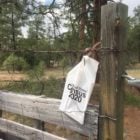Indigenous Affairs
Tribal communities have low returns as U.S. Census set to begin door-to-door phase
|
A coloring book developed to encourage people to return their census forms.A coloring book to encourage Native Americans to fill out the census / Courtesy of New Mexico Native Census Coalition
While 99 percent of homes on the New Mexico side of the Navajo Nation have received their “Update Leave” census packet–a specific form with an identification number that is geo-tagged to the person’s home–four tribes in the state have yet to allow census workers to begin dropping the packets door to door because of COVID-19 concerns.
Jicarilla Apache and the Pueblos of Zia, Pojoaque and Acoma have hired tribal members to drop packets at doors but haven’t started the training necessary to begin the work, Census officials said Tuesday during a media briefing.
The door-to-door packet delivery is designed to target rural and hard-to-reach homes. In August, census workers will begin doing in-person visits to homes that haven’t returned the packets. But how that will work in tribes that have yet to start the drops at the door remains unclear. The deadline to complete the census is October 31.
“They are in lockdown right now, that’s why we are not able to progress,” said Cathy Lacey, the U.S. Census Regional Director in Denver that oversees the operation in New Mexico tribes. “It could be that we’re never able to get on (these particular tribal lands) and do our Update Leave operation and we are in talks right now that we absolutely have to get on in order to do our non response follow up operation.”
Because tribal residents are encouraged to wait until they receive their packet, these communities have some of the lowest census returns in the nation.

